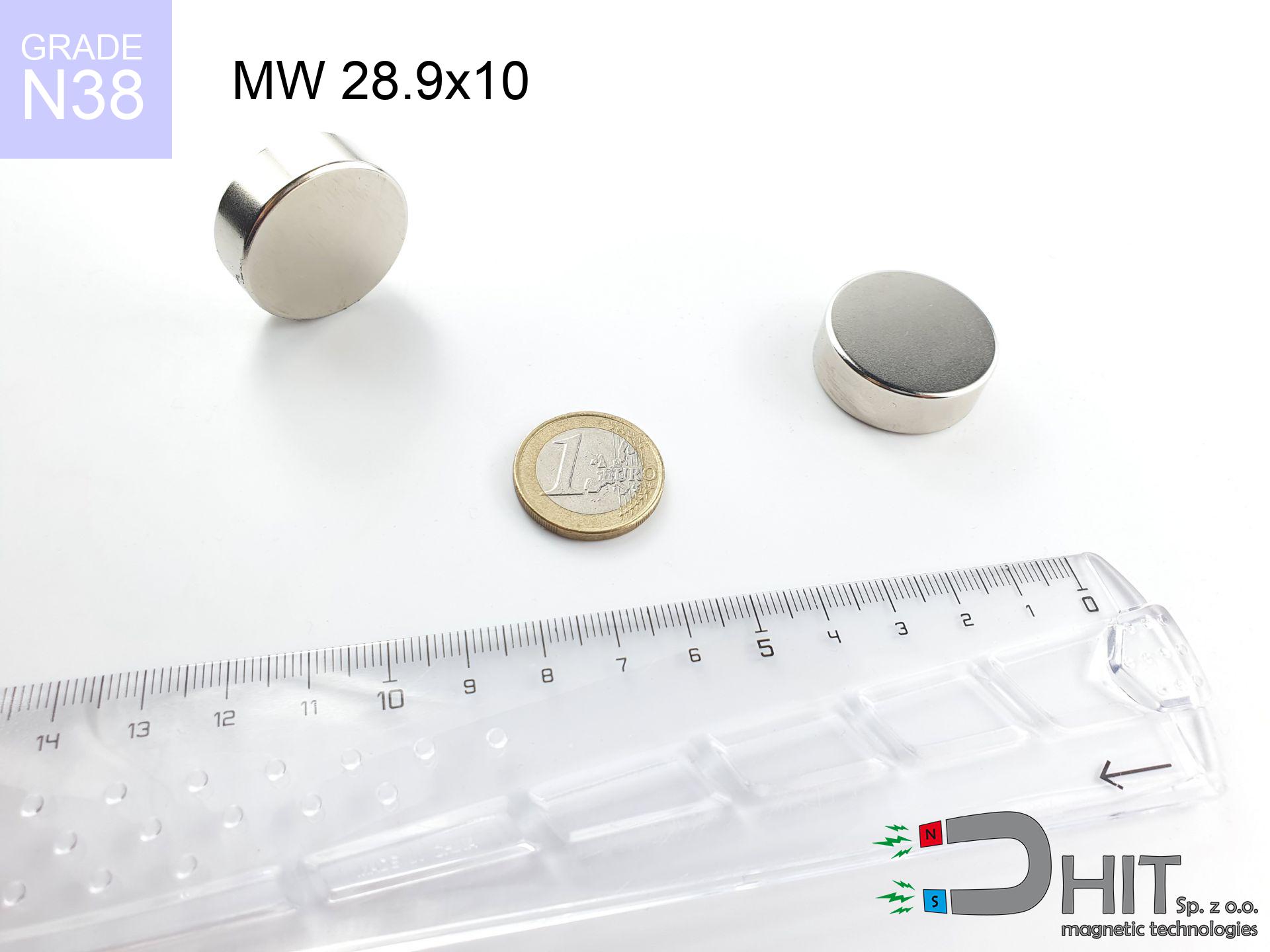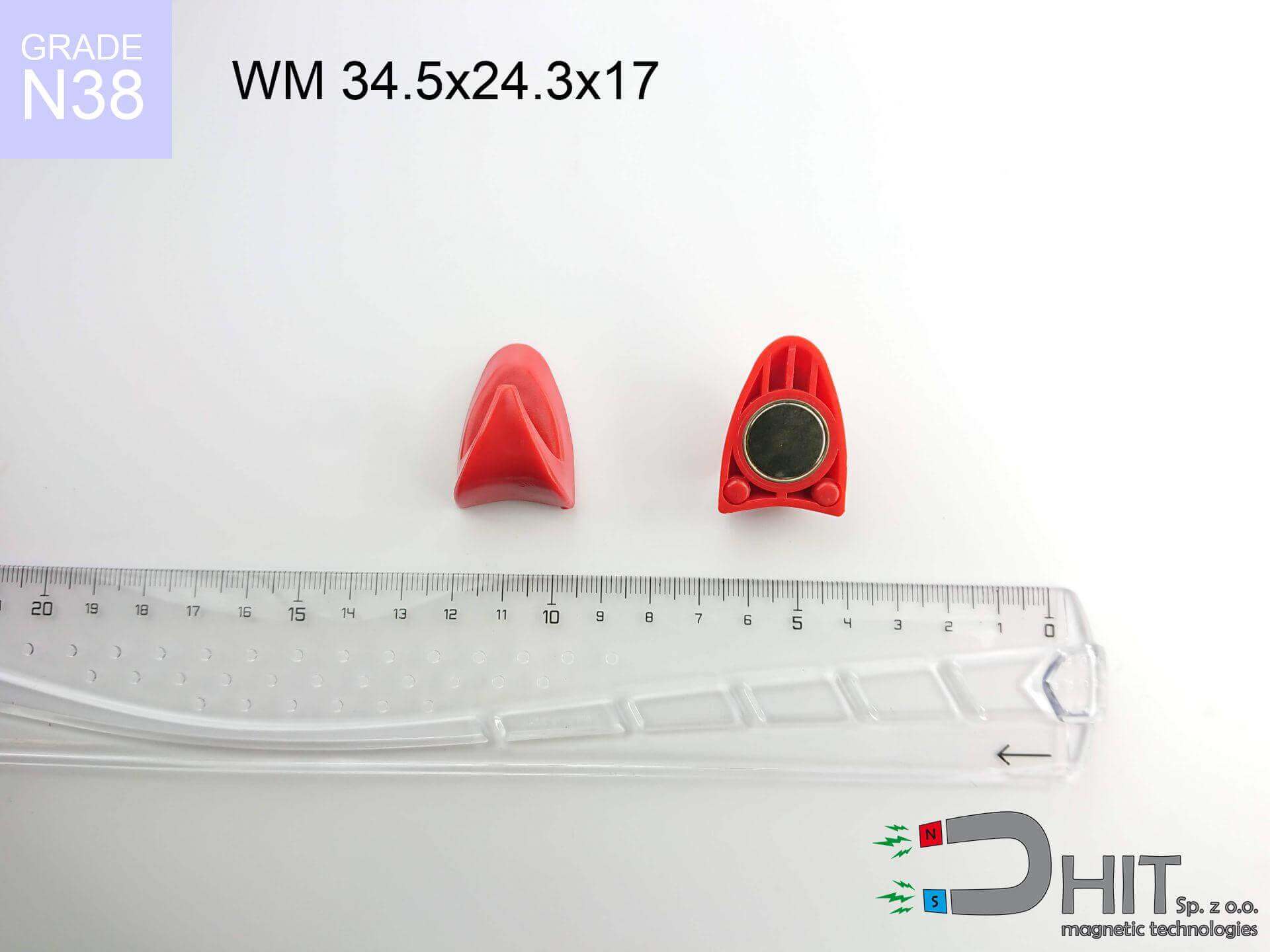SM 32x275 [2xM8] / N52 - magnetic separator
magnetic separator
Catalog no 130458
GTIN/EAN: 5906301813293
Diameter Ø
32 mm [±1 mm]
Height
275 mm [±1 mm]
Weight
1520 g
Magnetic Flux
~ 10 000 Gauss [±5%]
897.90 ZŁ with VAT / pcs + price for transport
730.00 ZŁ net + 23% VAT / pcs
bulk discounts:
Need more?
Call us now
+48 888 99 98 98
otherwise contact us using
request form
the contact section.
Lifting power as well as appearance of magnetic components can be calculated using our
force calculator.
Order by 14:00 and we’ll ship today!
Product card - SM 32x275 [2xM8] / N52 - magnetic separator
Specification / characteristics - SM 32x275 [2xM8] / N52 - magnetic separator
| properties | values |
|---|---|
| Cat. no. | 130458 |
| GTIN/EAN | 5906301813293 |
| Production/Distribution | Dhit sp. z o.o. |
| Country of origin | Poland / China / Germany |
| Customs code | 85059029 |
| Diameter Ø | 32 mm [±1 mm] |
| Height | 275 mm [±1 mm] |
| Weight | 1520 g |
| Material Type | Stainless steel AISI 304 / A2 |
| Magnetic Flux | ~ 10 000 Gauss [±5%] |
| Size/Mount Quantity | 2xM8 |
| Polarity | circumferential - 10 poles |
| Casing Tube Thickness | 1 mm |
| Manufacturing Tolerance | ±1 mm |
Magnetic properties of material N52
| properties | values | units |
|---|---|---|
| remenance Br [min. - max.] ? | 14.2-14.7 | kGs |
| remenance Br [min. - max.] ? | 1420-1470 | mT |
| coercivity bHc ? | 10.8-12.5 | kOe |
| coercivity bHc ? | 860-995 | kA/m |
| actual internal force iHc | ≥ 12 | kOe |
| actual internal force iHc | ≥ 955 | kA/m |
| energy density [min. - max.] ? | 48-53 | BH max MGOe |
| energy density [min. - max.] ? | 380-422 | BH max KJ/m |
| max. temperature ? | ≤ 80 | °C |
Physical properties of sintered neodymium magnets Nd2Fe14B at 20°C
| properties | values | units |
|---|---|---|
| Vickers hardness | ≥550 | Hv |
| Density | ≥7.4 | g/cm3 |
| Curie Temperature TC | 312 - 380 | °C |
| Curie Temperature TF | 593 - 716 | °F |
| Specific resistance | 150 | μΩ⋅cm |
| Bending strength | 250 | MPa |
| Compressive strength | 1000~1100 | MPa |
| Thermal expansion parallel (∥) to orientation (M) | (3-4) x 10-6 | °C-1 |
| Thermal expansion perpendicular (⊥) to orientation (M) | -(1-3) x 10-6 | °C-1 |
| Young's modulus | 1.7 x 104 | kg/mm² |
Table 1: Rod construction
SM 32x275 [2xM8] / N52
| Parameter | Value | Description / Unit |
|---|---|---|
| Diameter (Ø) | 32 | mm |
| Total length | 275 | mm (L) |
| Active length | 239 | mm |
| Section count | 10 | modules |
| Dead zone | 36 | mm (2x 18mm starter) |
| Weight (est.) | ~1681 | g |
| Active area | 240 | cm² (Area) |
| Housing material | AISI 304 | 1.4301 (Inox) |
| Surface finish | Ra < 0.8 µm | Polished |
| Temp. class | 80°C | Standard (N) |
| Force loss (at max °C) | -12.8% | Reversible loss (physics) |
| Force (calculated) | 41 | kg (theor.) |
| Induction (surface) | ~10 000 | Gauss (Max) |
Chart 2: Field profile (10 sections)
Chart 3: Temperature performance
Chemical composition
| iron (Fe) | 64% – 68% |
| neodymium (Nd) | 29% – 32% |
| boron (B) | 1.1% – 1.2% |
| dysprosium (Dy) | 0.5% – 2.0% |
| coating (Ni-Cu-Ni) | < 0.05% |
Sustainability
| recyclability (EoL) | 100% |
| recycled raw materials | ~10% (pre-cons) |
| carbon footprint | low / zredukowany |
| waste code (EWC) | 16 02 16 |
Check out also deals
Strengths as well as weaknesses of rare earth magnets.
Advantages
- Their magnetic field remains stable, and after approximately ten years it drops only by ~1% (according to research),
- They do not lose their magnetic properties even under close interference source,
- Thanks to the elegant finish, the layer of nickel, gold, or silver gives an clean appearance,
- Magnets are characterized by maximum magnetic induction on the active area,
- Due to their durability and thermal resistance, neodymium magnets can operate (depending on the shape) even at high temperatures reaching 230°C or more...
- Thanks to modularity in designing and the capacity to modify to individual projects,
- Significant place in electronics industry – they find application in magnetic memories, drive modules, medical devices, as well as technologically advanced constructions.
- Thanks to concentrated force, small magnets offer high operating force, with minimal size,
Cons
- At strong impacts they can crack, therefore we advise placing them in strong housings. A metal housing provides additional protection against damage, as well as increases the magnet's durability.
- Neodymium magnets decrease their power under the influence of heating. As soon as 80°C is exceeded, many of them start losing their force. Therefore, we recommend our special magnets marked [AH], which maintain durability even at temperatures up to 230°C
- When exposed to humidity, magnets usually rust. For applications outside, it is recommended to use protective magnets, such as magnets in rubber or plastics, which prevent oxidation as well as corrosion.
- Limited possibility of making threads in the magnet and complicated forms - preferred is casing - magnet mounting.
- Potential hazard to health – tiny shards of magnets pose a threat, in case of ingestion, which becomes key in the context of child safety. Additionally, tiny parts of these products can disrupt the diagnostic process medical when they are in the body.
- Higher cost of purchase is a significant factor to consider compared to ceramic magnets, especially in budget applications
Pull force analysis
Highest magnetic holding force – what affects it?
- using a base made of low-carbon steel, serving as a circuit closing element
- whose transverse dimension reaches at least 10 mm
- with a surface cleaned and smooth
- with total lack of distance (without impurities)
- during detachment in a direction vertical to the mounting surface
- at ambient temperature room level
Lifting capacity in real conditions – factors
- Gap between surfaces – even a fraction of a millimeter of distance (caused e.g. by veneer or dirt) significantly weakens the pulling force, often by half at just 0.5 mm.
- Pull-off angle – note that the magnet holds strongest perpendicularly. Under shear forces, the holding force drops significantly, often to levels of 20-30% of the maximum value.
- Plate thickness – too thin steel does not close the flux, causing part of the power to be lost to the other side.
- Chemical composition of the base – low-carbon steel gives the best results. Higher carbon content reduce magnetic permeability and lifting capacity.
- Surface structure – the more even the surface, the larger the contact zone and stronger the hold. Roughness creates an air distance.
- Temperature – temperature increase results in weakening of induction. It is worth remembering the thermal limit for a given model.
Holding force was measured on the plate surface of 20 mm thickness, when a perpendicular force was applied, however under shearing force the lifting capacity is smaller. Additionally, even a small distance between the magnet’s surface and the plate reduces the holding force.
Safe handling of NdFeB magnets
ICD Warning
Individuals with a pacemaker have to keep an absolute distance from magnets. The magnetic field can interfere with the operation of the life-saving device.
Immense force
Before starting, read the rules. Sudden snapping can break the magnet or injure your hand. Be predictive.
Pinching danger
Risk of injury: The pulling power is so great that it can cause blood blisters, crushing, and broken bones. Protective gloves are recommended.
Magnetic interference
Remember: rare earth magnets produce a field that disrupts sensitive sensors. Maintain a separation from your phone, tablet, and navigation systems.
Nickel coating and allergies
Studies show that nickel (standard magnet coating) is a strong allergen. For allergy sufferers, avoid direct skin contact or opt for encased magnets.
Maximum temperature
Avoid heat. Neodymium magnets are susceptible to temperature. If you need operation above 80°C, ask us about special high-temperature series (H, SH, UH).
Cards and drives
Do not bring magnets close to a wallet, laptop, or screen. The magnetism can permanently damage these devices and erase data from cards.
Fragile material
Neodymium magnets are sintered ceramics, which means they are very brittle. Clashing of two magnets will cause them cracking into shards.
Machining danger
Machining of NdFeB material carries a risk of fire risk. Magnetic powder oxidizes rapidly with oxygen and is difficult to extinguish.
No play value
NdFeB magnets are not toys. Eating several magnets can lead to them pinching intestinal walls, which constitutes a direct threat to life and necessitates urgent medical intervention.

![Magnetic bar SM 32x275 [2xM8] / N52 Magnetic bar SM 32x275 [2xM8] / N52](https://cdn3.dhit.pl/graphics/banners/magnet.webp)
![SM 32x275 [2xM8] / N52 - magnetic separator](https://cdn3.dhit.pl/graphics/products/sm-32x275-2xm8-get.jpg)


![SM 25x200 [2xM8] / N52 - magnetic separator SM 25x200 [2xM8] / N52 - magnetic separator](https://cdn3.dhit.pl/graphics/products/sm-25x200-2xm8-jas.jpg)
![UMGW 60x30x15 [M10] GW / N38 - magnetic holder internal thread UMGW 60x30x15 [M10] GW / N38 - magnetic holder internal thread](https://cdn3.dhit.pl/graphics/products/umgw-60x30x15-m10-gw-cug.jpg)

